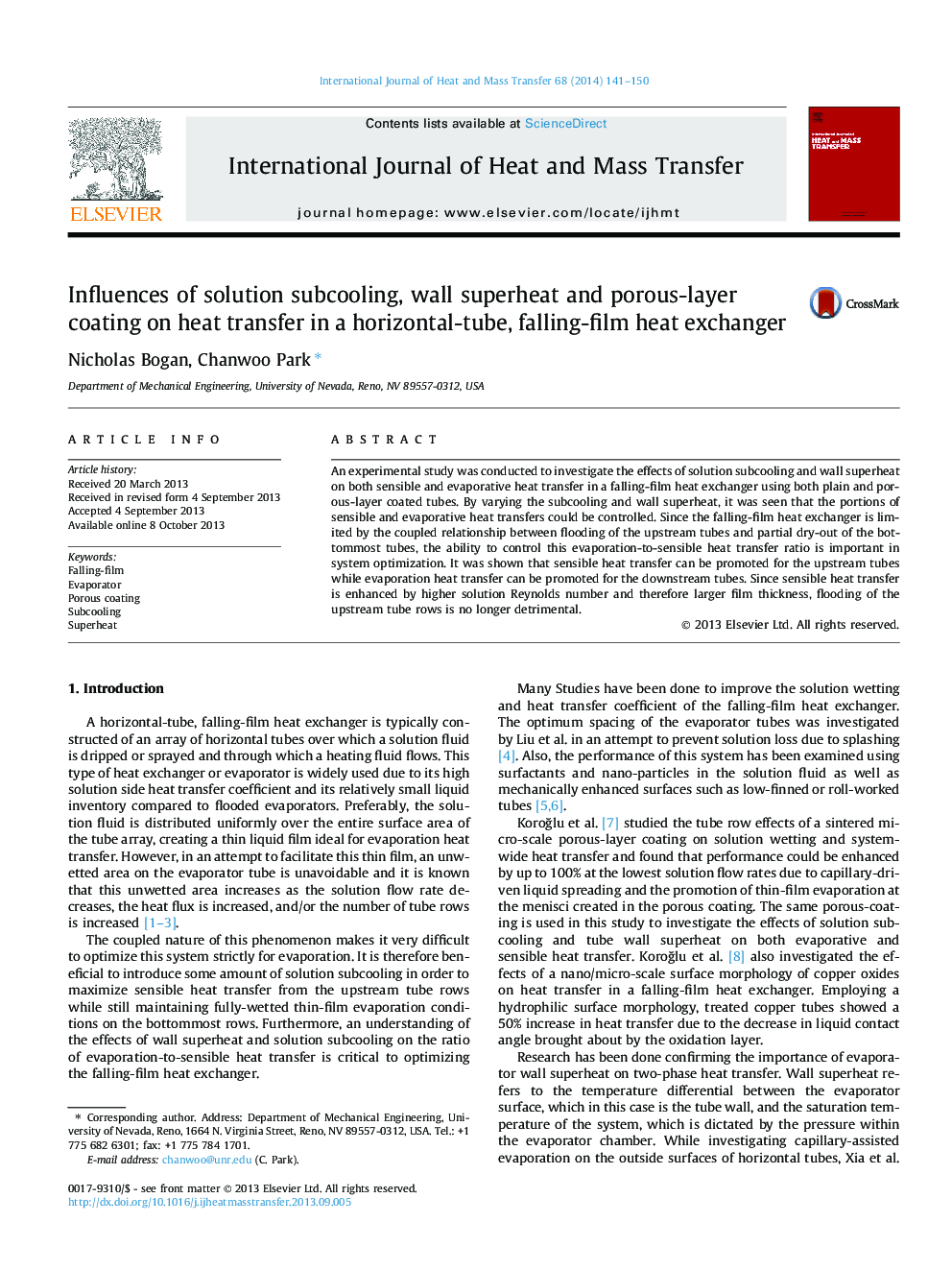| Article ID | Journal | Published Year | Pages | File Type |
|---|---|---|---|---|
| 658034 | International Journal of Heat and Mass Transfer | 2014 | 10 Pages |
An experimental study was conducted to investigate the effects of solution subcooling and wall superheat on both sensible and evaporative heat transfer in a falling-film heat exchanger using both plain and porous-layer coated tubes. By varying the subcooling and wall superheat, it was seen that the portions of sensible and evaporative heat transfers could be controlled. Since the falling-film heat exchanger is limited by the coupled relationship between flooding of the upstream tubes and partial dry-out of the bottommost tubes, the ability to control this evaporation-to-sensible heat transfer ratio is important in system optimization. It was shown that sensible heat transfer can be promoted for the upstream tubes while evaporation heat transfer can be promoted for the downstream tubes. Since sensible heat transfer is enhanced by higher solution Reynolds number and therefore larger film thickness, flooding of the upstream tube rows is no longer detrimental.
